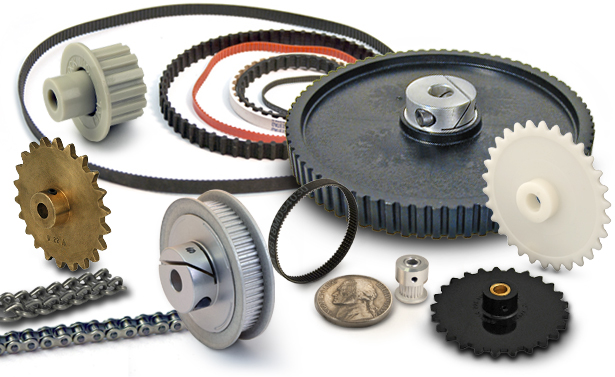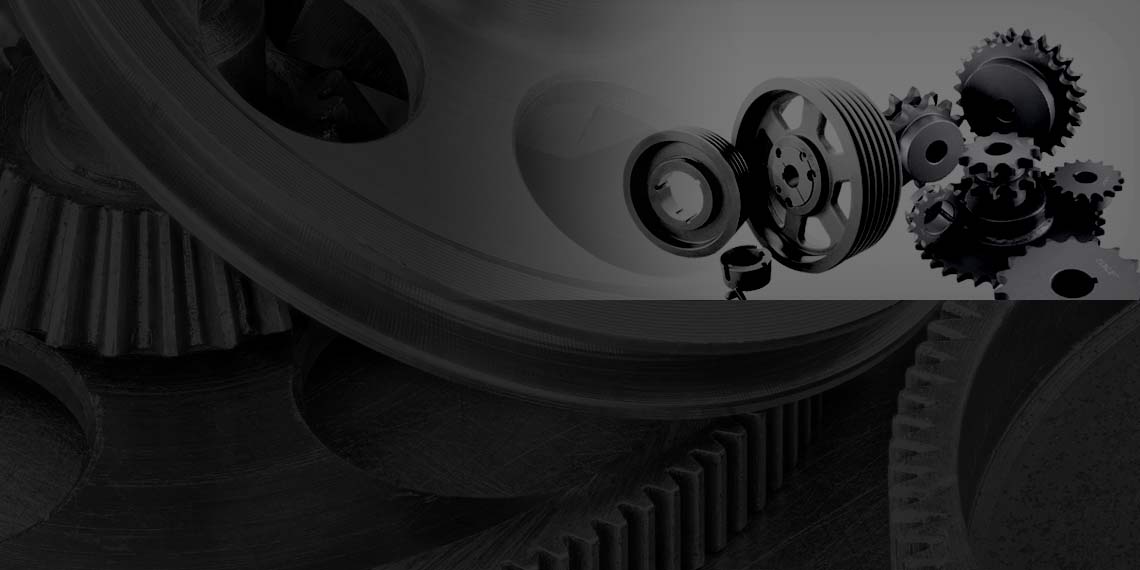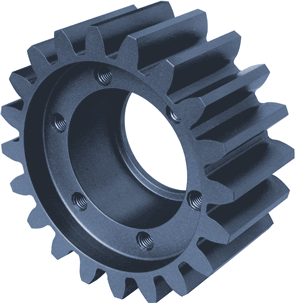Product Description
Molded Synchronous belts and Pulleys GT2 Sprockets timing pulley GT2 belt Pulley Synchronous
1) Warranty: our timing pulley’s quality is very good and with ensurance within 1 year, when you receive the products and find quality problems, we promise you could return it back and free maintenance.
2) Drawings: please send you timing pulleys’ drawings to us to get the best quotation; If you have no drawings, then we could work out CAD drawings and the best quotation to you ASAP.
3) Sample: we accept 1 piece sample’s order, we could do samples until you’re satisfied.
4) Confidentiality agreetment: Strictly adherence to client confidentiality agreetment for timing pulleys.
| Product Description |
|
Product Name |
Timing Belt Pulley | |
| Teeth profile | Trapezoidal toothed | MXL, XXL, XL, L, H, XH, XXH |
| T-toothed | T2.5, T5, T10, T20 | |
| Arc toothed | HTD3M, HTD5M, HTD8M, HTD14M, HTD20M, Gt2, Gt3, Gt5 | |
| S-toothed | S2M, S3M, S4.5M, S5M, S8M, S14M | |
| Parabolic-toothed | P2M, P3M, P5M, P8M, P14M | |
| Y-toothed | G2M, G3M, G5M, Y8M | |
| Teeth Quantity | 10-150 teeth or customized | |
| Inner Bore | 2-200mm H7 precision or customized | |
| Belt width | 4mm, 6mm, 9mm, 10mm, 12mm, 15mm, 20mm, 25mm, 30mm, 40mm, 50mm, 1/4”, 5/16”, 3/8”, 1/2”, 3/4”, 1”, 1.5”, 2”or customized | |
| Accessories | We can provide the service of assembling setscrews, bearings, shafts or taper bush | |
| Surface treatment | Anodize,Black Oxide,Phosphate and Galvanization | |
| Drawing Format | Timing belt pulley cad drawing,timing belt pulley UG drawing,Timing belt Pulley Soliwork drawing,Timing Pulley PDF drawing | |
What is timing pulley?
Timing pulleys are specialized pulleys that have either teeth or pockets around the outside diameter of the pulley body. Timing teeth engage holes in the metal belt, while timing pockets engage drive lugs on a belt’s inner circumference. These teeth or pockets are used only for timing, not for power transmission.
How timing pulleys work?
The synchronous wheel transmission is composed of an endless belt with equal-spaced teeth on the inner peripheral surface and a pulley with corresponding teeth. During operation, the toothed teeth mesh with the tooth grooves of the pulley to transmit motion and power, which is integrated with the belt. A new type of belt drive with the advantages of transmission, chain drive and gear transmission.
What is gt2 timing pulley?
2mm pitch GT2 Pulley. The GT2 or 2GT Tooth Profile timing pulley prevails in the 3d printing hobby cause the Round tooth profile brings high precision of non-backlash, were known as today’s Reprap Pulley.
What is a timing pulley flange?
Timing pulley flanges are used to maintain belt contact with a timing pulley in power transmission applications.Timing pulley flanges are manufactured to fit timing pulleys of the same pitch and size. The dimensions of a pitch, including the mating flange, are specified by the number of grooves.
What are synchronous belts used for?
The trapezoidal tooth profile first used on synchronous belts is recognized as standard. Belts with this configuration are commonly used in machine tools, textile machinery, home appliances, business equipment, and as camshaft drives in engines.
Note:Please confirm you need teeth profile, teeth quantity, belt width, bore diameter, quantity and type (please refer below drawings) to get our the most complete CAD drawings and the best quotation.
Related Products
/* January 22, 2571 19:08:37 */!function(){function s(e,r){var a,o={};try{e&&e.split(“,”).forEach(function(e,t){e&&(a=e.match(/(.*?):(.*)$/))&&1
| Certification: | ISO |
|---|---|
| Pulley Sizes: | Type F |
| Manufacturing Process: | Forging |
| Material: | Iron |
| Surface Treatment: | Baking Paint |
| Application: | Chemical Industry, Grain Transport, Mining Transport, Power Plant |
| Samples: |
US$ 50/Piece
1 Piece(Min.Order) | |
|---|
| Customization: |
Available
| Customized Request |
|---|

Can sprocket pulleys be used in both heavy-duty industrial machinery and smaller systems?
Yes, sprocket pulleys can be used in both heavy-duty industrial machinery and smaller systems. Here’s an explanation:
Sprocket pulleys are versatile components that are designed to transmit power and motion between a driving source, such as an electric motor or an engine, and a driven component, typically a chain. They are commonly used in a wide range of applications, including various industries and systems of different sizes and load requirements.
1. Heavy-Duty Industrial Machinery: In heavy-duty industrial machinery, sprocket pulleys are often employed to transmit power and torque in demanding applications. These applications may involve high loads, harsh operating conditions, or the need for precise motion control. Industries such as mining, construction, manufacturing, and agriculture rely on sprocket pulleys to transfer power efficiently and reliably. Heavy-duty sprocket pulleys are constructed using robust materials such as steel or cast iron to withstand the high forces and provide long-lasting performance.
2. Smaller Systems: Sprocket pulleys are also used in smaller systems and equipment. These systems may include smaller machinery, appliances, conveyors, or other mechanisms that require power transmission through a chain drive. While the loads and operating conditions may be less severe compared to heavy-duty industrial machinery, the principles of power transmission and motion control remain the same. Sprocket pulleys in smaller systems are typically designed to be compact, lightweight, and efficient, taking into account space limitations and specific load requirements.
The versatility of sprocket pulleys lies in their ability to be customized and selected based on the specific needs of the application. Factors such as size, diameter, number of teeth, material selection, and tooth profile can be tailored to meet the requirements of both heavy-duty industrial machinery and smaller systems. Manufacturers offer a wide range of sprocket pulley options to accommodate different load capacities, space constraints, and performance specifications.
Whether it’s a large-scale industrial machine or a smaller system, sprocket pulleys play a vital role in transmitting power and motion, ensuring efficient operation and reliable performance.

How do sprocket pulleys contribute to cost savings and energy efficiency in manufacturing?
Sprocket pulleys offer several ways to achieve cost savings and improve energy efficiency in manufacturing processes. Here are the key ways in which sprocket pulleys contribute to these benefits:
1. Efficient Power Transmission: Sprocket pulleys, in combination with a chain drive system, provide efficient power transmission from the driving source to the driven components. The engagement between the sprocket pulleys and the chain minimizes energy losses due to friction and slippage, ensuring that a higher percentage of the input power is effectively utilized. This improved power transmission efficiency results in reduced energy consumption and cost savings.
2. Speed Control: Sprocket pulleys allow for precise speed control in manufacturing processes. By selecting sprocket pulleys with different diameters or tooth counts, the rotational speed of the driven components can be adjusted relative to the driving source. This speed control capability enables manufacturers to optimize the production line speed, ensuring efficient operation and avoiding unnecessary energy consumption.
3. Load Distribution: Sprocket pulleys distribute loads evenly across the chain drive system. As the chain engages with the sprocket pulleys, the load is distributed among multiple teeth, reducing stress on individual components. This load distribution minimizes the risk of premature wear, fatigue, and component failure, leading to improved reliability and reduced maintenance costs.
4. Motion Synchronization: Sprocket pulleys enable precise motion synchronization in manufacturing processes. By positioning multiple sprocket pulleys strategically within a chain drive system, the movement of different components or equipment can be synchronized. This synchronization ensures coordinated motion, avoiding unnecessary delays, collisions, or inefficiencies. Optimized motion synchronization contributes to increased productivity, reduced downtime, and improved overall energy efficiency.
5. Reduced Energy Waste: Sprocket pulleys help minimize energy waste in manufacturing processes. When properly selected and implemented, they ensure that the driven components operate at the required speed without excessive slippage or overloading. This reduces energy waste associated with unnecessary friction, heat generation, or power dissipation. By optimizing energy usage, manufacturers can achieve significant cost savings and improve their environmental sustainability.
6. Longevity and Maintenance: Properly maintained sprocket pulleys contribute to cost savings by extending the lifespan of the chain drive system. Regular maintenance, including lubrication and inspections, helps identify and address potential issues before they escalate into major failures. By preventing premature wear or damage to the sprocket pulleys and the chain, manufacturers can avoid costly unplanned downtime, component replacements, or major repairs.
7. Flexibility and Adaptability: Sprocket pulleys offer flexibility and adaptability in manufacturing processes. They can be easily adjusted or replaced to accommodate changes in production requirements, such as different speeds, load capacities, or configurations. This flexibility allows manufacturers to optimize their equipment setup, adapt to evolving market demands, and potentially avoid the need for significant equipment investments.
In summary, sprocket pulleys contribute to cost savings and energy efficiency in manufacturing through efficient power transmission, speed control, load distribution, motion synchronization, reduced energy waste, longevity and maintenance benefits, and flexibility in adapting to changing production needs. By leveraging these advantages, manufacturers can optimize their processes, reduce operational costs, and enhance their overall sustainability.

How does the design of sprocket pulleys contribute to precise motion control in systems?
The design of sprocket pulleys plays a crucial role in contributing to precise motion control in systems. Here’s an explanation of how the design of sprocket pulleys enables precise motion control:
1. Toothed Surface: Unlike traditional pulleys, sprocket pulleys have a toothed surface with teeth or cogs arranged around the outer circumference. These teeth mesh with the links of a chain or timing belt, creating a positive engagement. The toothed surface ensures a secure connection between the pulley and the chain or belt, preventing slippage and ensuring precise motion control.
2. Accurate Positioning: The teeth on the sprocket pulley allow for accurate positioning of the connected components. As the chain or timing belt moves along the teeth, the position of the driven component can be precisely controlled. This is particularly important in applications where precise positioning is crucial, such as robotics, automated manufacturing, and printing presses.
3. Smooth and Consistent Motion: The toothed design of sprocket pulleys contributes to smooth and consistent motion control. The engagement between the teeth and the chain or timing belt helps to minimize vibrations, jerks, and fluctuations in speed. This promotes stable and predictable motion, which is essential for applications that require precise control over the movement of components.
4. Reduced Backlash: Backlash refers to the slight movement or play between the driving and driven components when the direction of motion is reversed. Sprocket pulleys, with their toothed design, help reduce backlash. The teeth ensure a positive engagement with the chain or timing belt, eliminating or minimizing any free play and providing more accurate and responsive motion control.
5. High Torque Transmission: Sprocket pulleys are capable of transmitting high levels of torque efficiently. The toothed design allows for a larger contact area between the pulley and the chain or belt, distributing the torque more evenly. This enables the sprocket pulley to handle higher loads and deliver precise motion control even in applications that require significant power transmission.
6. Timing and Synchronization: Sprocket pulleys, in conjunction with timing belts, facilitate precise timing and synchronization of components in systems. The teeth on the pulley and the corresponding teeth on the timing belt ensure accurate coordination of the movement between multiple pulleys, enabling precise control over the timing of events or the synchronized operation of various parts.
7. Multiple Teeth Engagement: Sprocket pulleys typically have multiple teeth engaged with the chain or timing belt at any given time. This multi-tooth engagement provides more contact points and distributes the load across the teeth, reducing wear and extending the lifespan of both the pulley and the chain or belt. It also contributes to smoother and more precise motion control.
Overall, the toothed design of sprocket pulleys, with its secure engagement, accurate positioning, smooth motion, reduced backlash, high torque transmission, timing and synchronization capabilities, and multiple teeth engagement, ensures precise motion control in systems. These design features make sprocket pulleys suitable for applications where accurate and reliable motion control is essential.


editor by CX
2024-04-30
